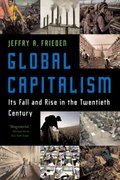Microeconomic.
3 Bonus (5 points): question from chapter 1: Suppose that we have 8 people who want to rent an apartment. Their reservation prices are given below. (To keep the numbers small, think of these numbers as being daily rent payments.) Person=A B C D E F G H Price = 40 25 30 35 10 18 15 5 a) Plot the market demand curve (Hint: When the market price is equal to some consumer i's reservation price, there will be two different quantities of apartments demanded, since consumer i will be indifferent between having or not having an apartment.) b) Suppose the supply of apartments is fixed at 5 units. In this case there is a whole range of prices that will be equilibrium prices. What is the highest price that would make the demand for apartments equal to 5 units? c) What is the lowest price that would make the market demand equal to 5 units? d) With a supply of 4 apartments. which of the people A-H end up getting apartments e) What if the supply of apartments increases to 6 units. What is the range of equilibrium prices? 2 Short Answer (5 points each): Always show your work! Question 1: Felicity is studying economics and political science. She can read 30 pages of political science per hour but only 5 pages of economics per hour. This week she has a 50-page assignment in economics and a ISO-page assignment in political science. Because of practice, she cannot devote more than 10 hours to studying these subjects this week. She realizes she cannot complete all of her assignments but is determined to complete at least 30 pages of her economics reading. Draw a graph with pages of economics on the horizontal axis and pages of political science on the vertical axis. On this graph, show the possibilities that are consistent with the constraints that Felicity has imposed on herself. (She is allowed to read ahead in either subject.) Label key points on your graph with their numerical values. Hint: Make sure to answer the following: 1) how many pages of economics could she read if she decided to spend all of her time on economics and none on politics? 2) how many pages of politics could she read if she decided to spend all of her time on politics and none on economics? Question 2: Draw a budget line for each case. Hint: How much of good 1 could you afford if you spend your entire budget on good 1? (a) p1 = 1, p2 = 1, m = 15. (Use blue ink.) (b) p1 = 1, p2 = 2, m = 20. (Use red ink.) (c) p1 = 0, p2 = 1, m = 10. (Use black ink.) (d) p1 = p2, m = 15p1. (Use pencil) QuestiOn 3: Which term do economists use to refer to the slope of the budget constraint? Explain. Question 3: In the economy of Mungo, discussed in Problem 12, there is a third person called Ike. Ike has a red income of 82 and a blue income of 25. Recall that blue prices are 1 bcu (blue currency unit) per unit of ambrosia and 1 bcu per unit of bubble gum. Red prices are 2 rcus (red currency units) per unit of ambrosia and 6 rcus per unit of bubble gum. You have to pay twice for what you buy, once in red currency, once in blue currency. If Ike spends all of his blue income but not all of his red income he must consume (a) at least 8 units of bubble gum. (b) at least 17 units of ambrosia. (c) exactly twice as much bubble gum as ambrosia. (d) at least 13 units of bubble gum. (e) equal amounts of ambrosia and bubble gum. Question 4: If you could exactly afford either 2 units of x and 7 units of y, or 4 units of x and 3 units of y, then if you spent all of your income on y, how many units of y could you buy? (a) 11 (b) 7 (c) 15 (d) 6 (e) None of the above. Question 5: Murphy used to consume 100 units of X and 50 units of Y when the price of X was $2 and the price of Y was $4. If the price of X rose to $5 and the price of Y rose to $5, how much would Murphy's income have to rise so that he could still afford his original bundle? (a) $400 (b) $350 (c) $200 (d) $600 (e) None of the above. 1 Multiple Choice Questions (4 points each): Always show your work! Question 1: If you have an income of $18 to spend, if commodity 1 cost $3 per unit, and if commodity 2 costs $9 per unit, then the equation for your budget line can be written (a (l) (3131 + $2)/12 : 18 %+%=m ) ) (c) 391 + 3:192 : 6 (d) 4:51 + 10932 = 19 ) (e 12(331 + m2) = 18 Question 2: Ads in the boring business magazine are read by 300 lawyers and 1.000 M.B.A.s. Ads in the consumer publication are read by 250 lawyers and 300 M.B.A.s. If Harry had $4,200 to spend on advertising, if the price of ads in the boring business magazine were $700, and if the price of ads in the consumer magazine were $350, then the combinations of recent M.B.A.s and lawyers with hot tubs whom he could reach with his advertising budget would be represented by the integer values along a line segment that runs between the two points (a) (3. 600, 0) and (o, 7, 200). (b) (3, 000, 3, 600) and (1, 300, 6, 000). (c) (o, 3, 600) and (1, 800, 0). (d) (3, 600, 4, 200) and (1, 300, 7, 200). (e) (2, 400, 0) and (o, 6. 000)










